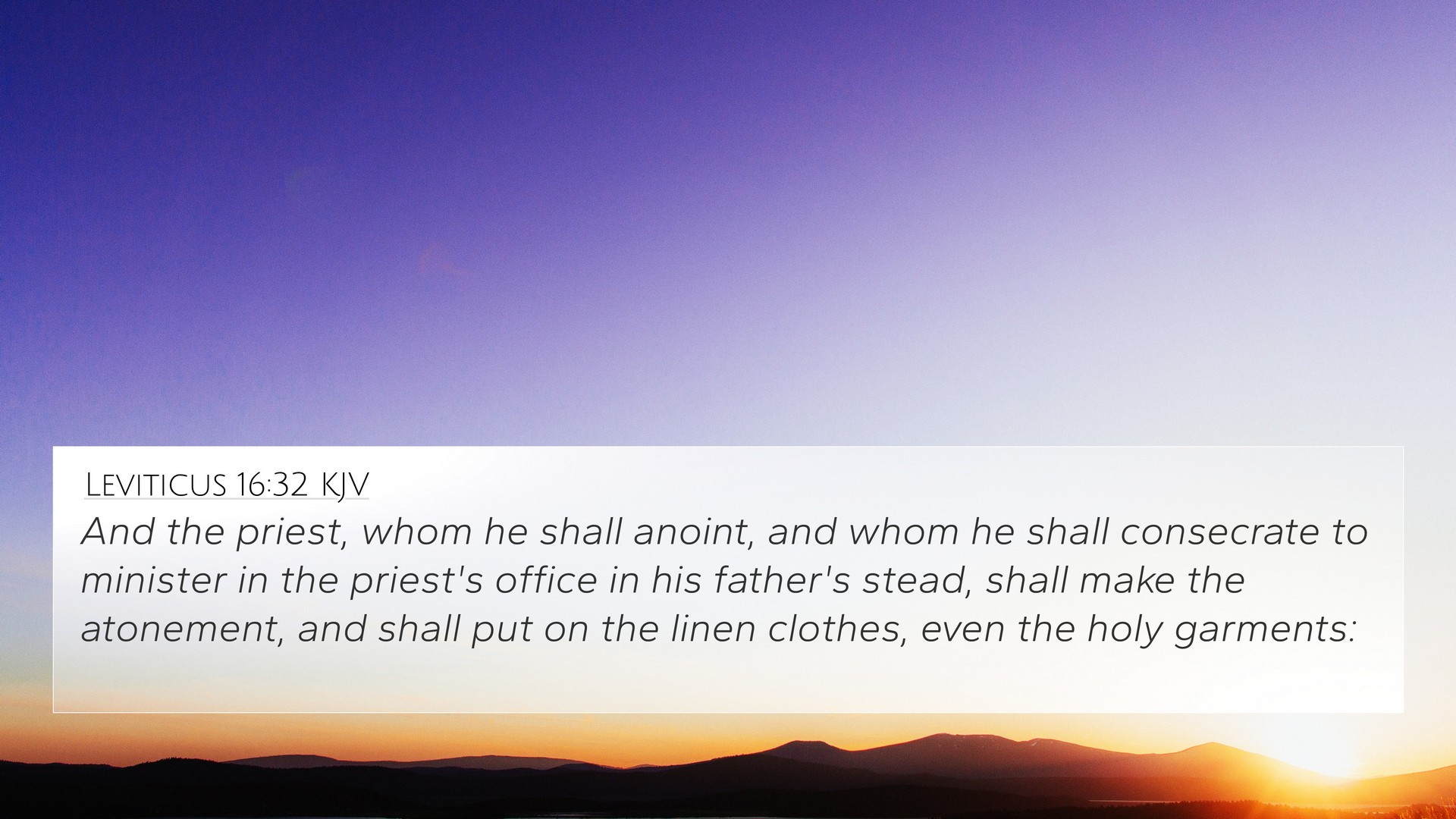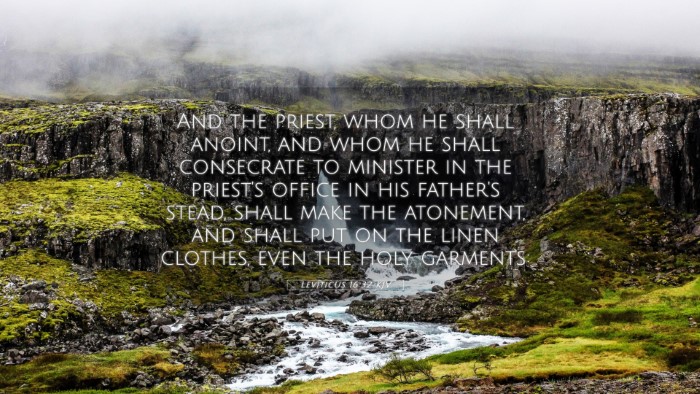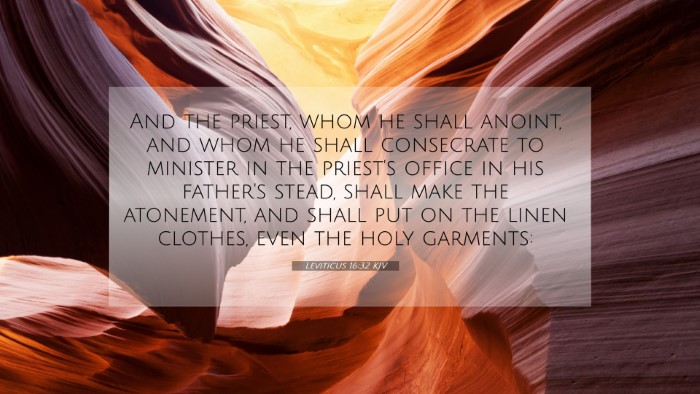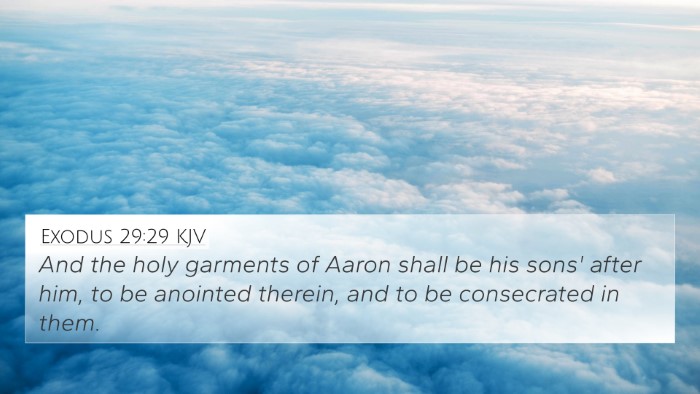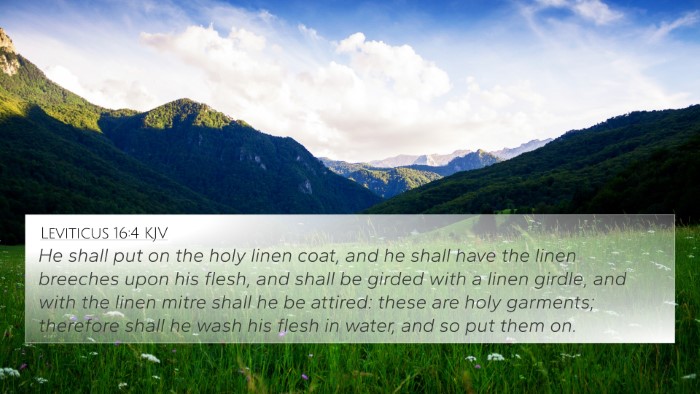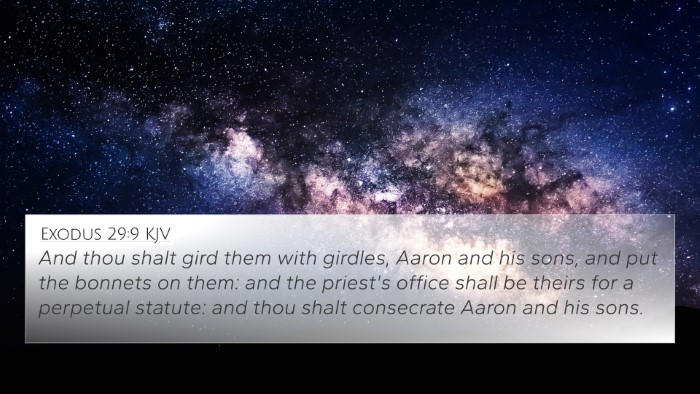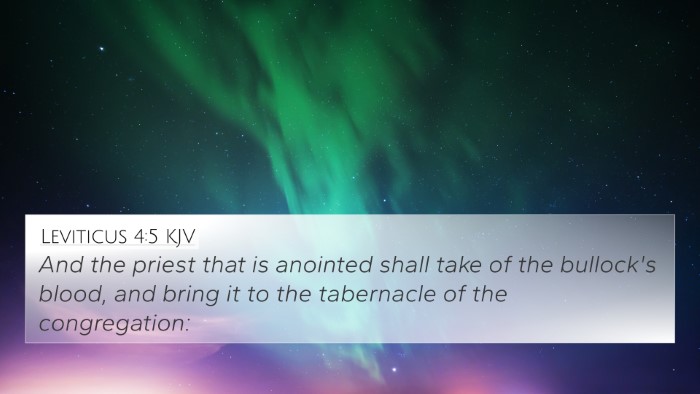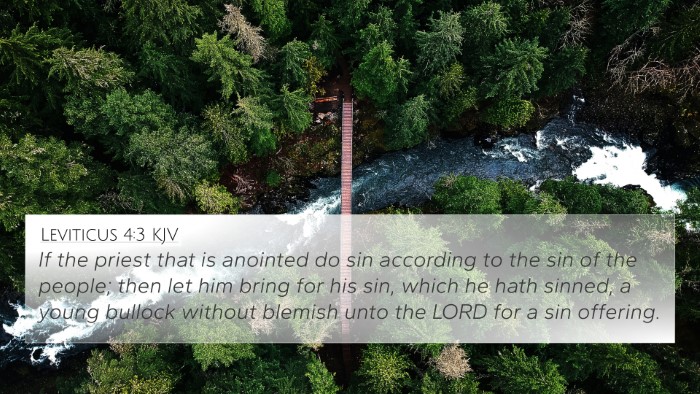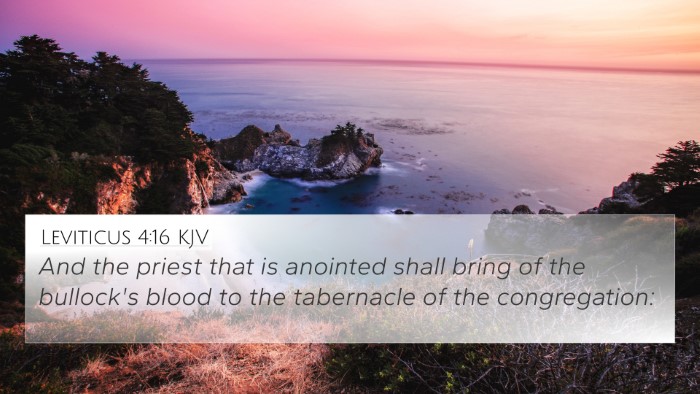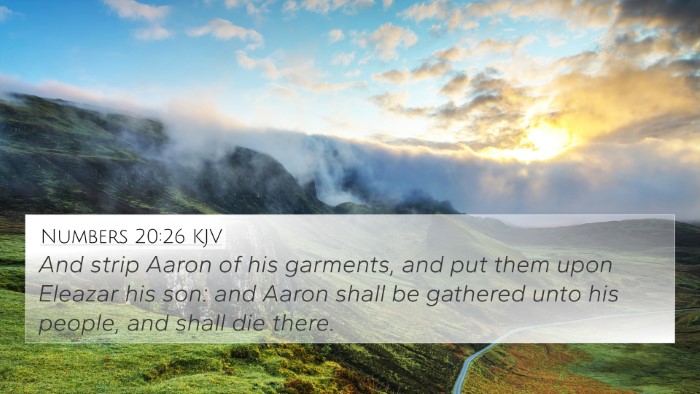Understanding Leviticus 16:32
Bible Verse: Leviticus 16:32 - "And the priest, whom he shall anoint, and whom he shall consecrate to minister in the priest's office in his father's stead, shall make the atonement, and shall put on the linen clothes, even the holy garments."
Overview
Leviticus 16:32 provides significant insights into the priestly duties during the Day of Atonement, a crucial event in the Israelite religious calendar. This verse emphasizes the role of the anointed priest and the holiness required for performing atonement rituals, underscoring the profound connection between the ordinances of the Old Testament and the future redemptive work of Christ.
Commentary Insights
- Matthew Henry: Henry highlights the solemnity and authority of the ordained priest who is tasked with atonement. He notes that the anointing symbolizes the divine appointment and the special grace conferred upon the priest, making him fit for sacred duties. The significance of being robed in holy garments reflects God's requirement for purity in those who approach Him on behalf of the people.
- Albert Barnes: Barnes elaborates on the priest's responsibility, explaining that this verse includes the broader context of atonement and sacrificial worship. He points to how the Day of Atonement serves not only as a means for Israel's sin to be covered but also as a foreshadowing of Christ’s ultimate sacrifice. The mention of linen garments indicates the necessity for purity and humility in service to God.
- Adam Clarke: Clarke brings attention to the garments worn by the priest, stressing their significance in representing sanctification and righteousness. He suggests that the priest’s anointing and consecration is a clear symbolic prelude to Christ’s inauguration as our High Priest in the New Covenant, illustrating continuity and fulfillment between the Testaments.
Connections to Other Bible Verses
Leviticus 16:32 relates closely to various scriptures that deepen our understanding of atonement, priesthood, and holiness. Here are several important cross-references:
- Hebrews 4:14-16: This passage reflects on Jesus as our High Priest who has passed through the heavens, emphasizing His sinlessness and ability to sympathize with our weaknesses.
- Hebrews 9:11-14: This text discusses the superior priesthood of Christ, who entered the heavenly sanctuary with His own blood, attaining eternal redemption for us.
- Exodus 29:29-30: This scripture outlines the consecration of the priesthood, indicating the significance of the garments once again in setting apart those called to serve.
- Leviticus 21:10-15: Here, we see further qualifications for the high priest, emphasizing the gravity and sanctity of the office.
- Romans 3:25: This verse highlights Jesus as the propitiation for our sins, linking the concept of atonement directly back to the sacrifices presented in Leviticus.
- 1 Peter 2:9: This passage reveals believers as a "royal priesthood," drawing a parallel between the functions of the Old Testament priests and the New Testament calling of Christians to serve God.
- Matthew 27:51: In the moment of Christ's death, the veil of the temple was torn, symbolizing access to God made possible through Christ's atoning work, fulfilling the purpose of the Day of Atonement.
- Isaiah 53:5: This prophetic verse speaks to the suffering servant who would bear our iniquities, bridging the understanding of atonement across the biblical narrative.
Thematic Connections
This verse highlights thematic elements central to biblical theology—particularly the ideas of atonement, holiness, and divine calling. The portrayal of the priest in Leviticus sets a framework for the redemptive narrative that unfolds throughout Scripture, culminating in the New Testament with Christ as the fulfillment of these types and shadows.
SEO Keywords
This content incorporates the following key phrases:
- Bible verse cross-references
- Connections between Bible verses
- Linking Bible scriptures
- Comparative Bible verse analysis
- Bible verses that relate to each other
- Cross-referencing Biblical texts
- Thematic Bible verse connections
- Bible verse parallels
- Scriptural cross-referencing
- Inter-Biblical dialogue
Cross-Referencing Resources
For deeper study, consider exploring tools and resources for Bible cross-referencing, such as:
- Bible concordance
- Bible cross-reference guide
- Cross-reference Bible study
- How to use Bible cross-references
- Bible cross-reference system
- Cross-referencing Bible study methods
- Bible reference resources
- Bible chain references
- Comprehensive Bible cross-reference materials
Conclusion
Leviticus 16:32 serves as a vital link between the Old Testament sacrificial system and the New Testament revelation of Jesus Christ as the ultimate High Priest. By examining the insights from public domain commentaries and exploring extensive scriptural cross-references, readers can deeply understand the significance of this verse within the larger biblical narrative and its application in contemporary faith.
